Samarkand, Uzbekistan’s second-largest city, is known as the “Green Capital,” and was formerly the capital of the great Temurid Kingdom. There is no doubt that Juvaini’s famous phrase “If there is a paradise on earth, it must be Samarkand” is correct. Let’s take a look at the splendor of Central Asia’s greatest tourism complex and learn more about traveling to this wonderful destination.
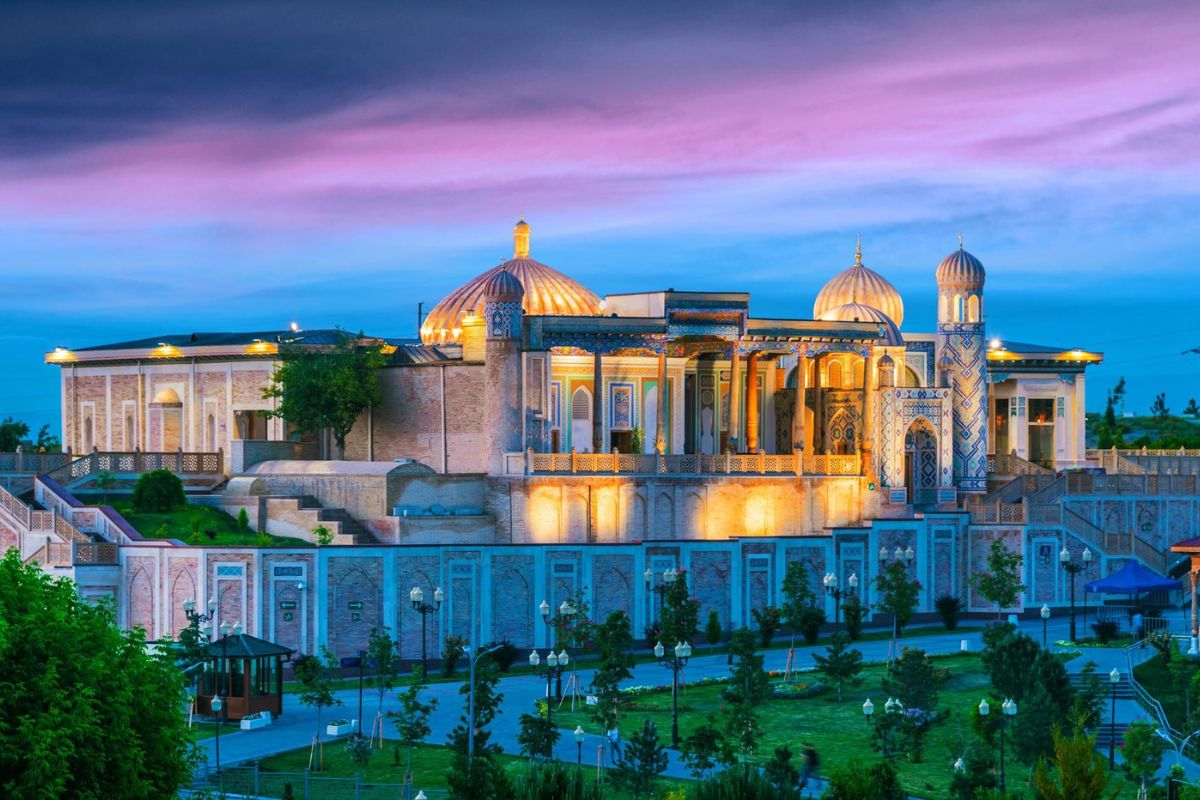
Photo: Planetofhotels
Samarkand, the Silk Road’s crown jewel, has long been recognized as an important destination for significant leaders such as China’s Xi Jinping, Turkey’s Recep Erdogan, India’s Narendra Modi, and a dozen other heads of state.
Samarkand is said to be one of the most beautiful places in Asia, with its thousand-year history and spectacular monuments, many of which are UNESCO World Heritage Sites. The Silk Road Samarkand is more than just a resort; it was chosen to host the Shanghai Cooperation Organization’s annual leaders conference as its first event. The cutting-edge complex shows both the management’s lofty goals and their capacity to make them a reality.
Images of turquoise domes and murals covered in china and inlaid with valuable stones, as well as prominent blue art deco motifs on mosques, pique the imagination of newcomers. Even after many historical struggles and tribulations, the green diamond still shines brightly in the Muslim spiritual realm.
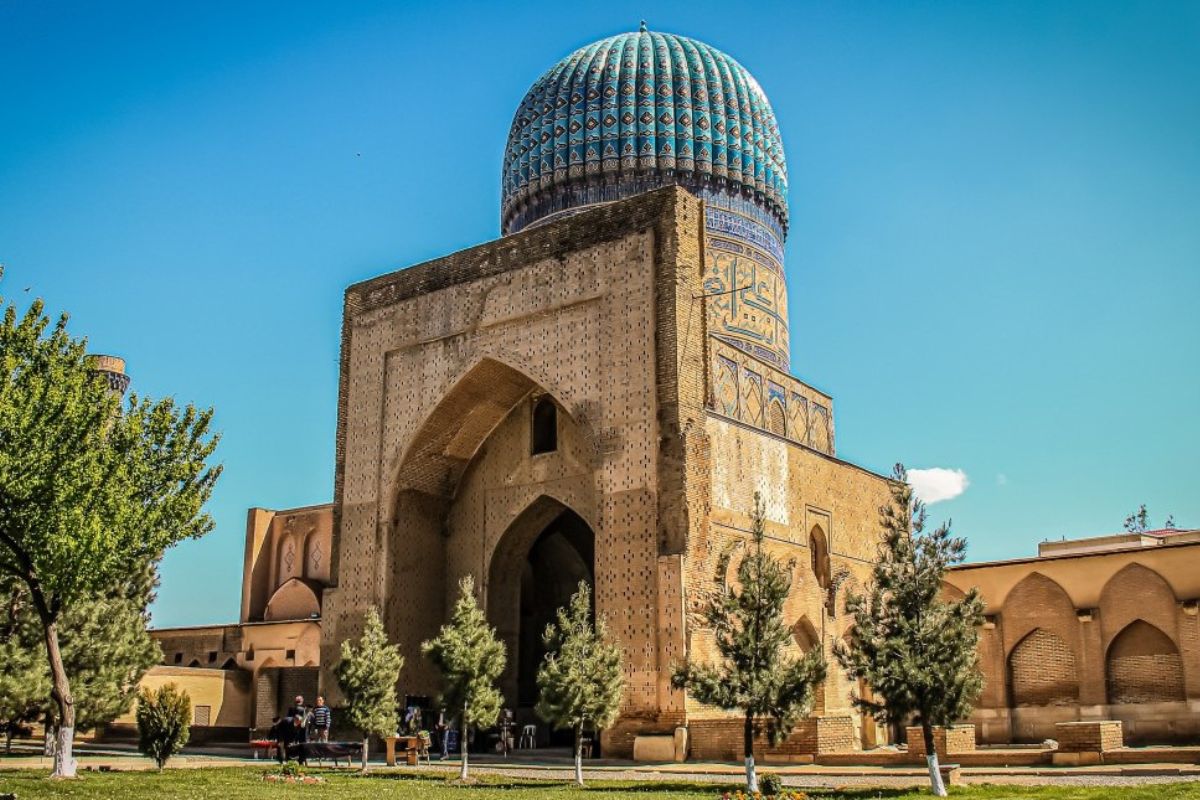
Photo: Anur Tour
The city is over 3,000 years old, and UNESCO has designated it as a world cultural heritage site as Samarkand, a cultural crossroads. Founded in the 7th century BC, the approximately 3,000-year-old city attracts a large influx of visitors each year.
In the cultural crossroads, there are many world-famous tourist attractions, such as the heart of the old city with magnificent mosques and Islamic schools, the mausoleum of Emperor Amir Temur, the largest market in the city of Siab bazaar, which is always busy with all kinds of goods, the population of Shakhi-zinda and Gur-Emir, as well as the Ulugh-Beg observatory… To really appreciate this magnificent metropolis, your legs should be naturally drawn in three directions.
Historical masterpieces that have survived the test of time
Step into northeast Samarkand and you’ll see the ancient citadel of Afrosiab, which was founded in the 7th century BC. It used to be a source of fear for slaves seeking freedom under Genghis Khan’s army in the 13th century. When tourists visit, the sound of melancholy screams seems to reverberate in their ears. There are also murals and relics of the historic citadel, castle, and palace. The huge mosque, built from the eighth to the twelfth century, stands towering in the midst of the blue sky, defying time.
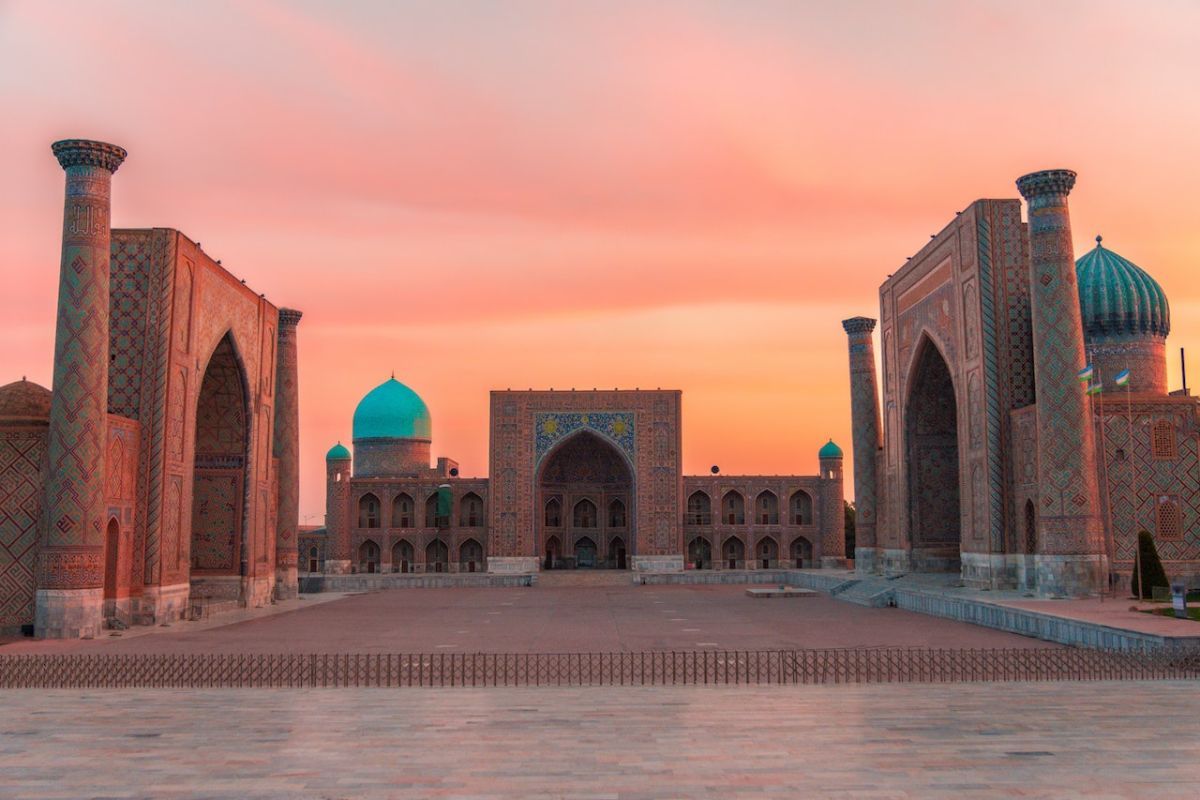
Photo: Ehsan Haque
A cluster of architectural works and medieval cities from the Temurid dynasty in the 14th-15th centuries played an important role in the development of architecture, art, and city planning in the south of Samarkand. The Old Quarter, with its low buildings made of mud bricks, is material evidence of historical elements and the typical region. The Safavids in Yugoslavia, the Monghuls in India, and even the Ottoman dynasties in Turkey accomplished remarkable achievements that reflected the distinctive characteristics of the Muslim world.

Photo: AXP Photography
The West contributes alternative modern works of Russian and Western architecture from the nineteenth and twentieth centuries. The most notable location here is undoubtedly Bibi-Khanym, which has a tale surrounding its construction. Emperor Timur’s adored wife agreed to let the main architect kiss him on the cheek in order to encourage him to finish the church in time for the emperor’s homecoming. The emperor was forever enraged by the kiss left on the queen’s cheek because of his strong love for her. No one knows for sure, but the sheer beauty of this mosque is surely deserving of a kiss.
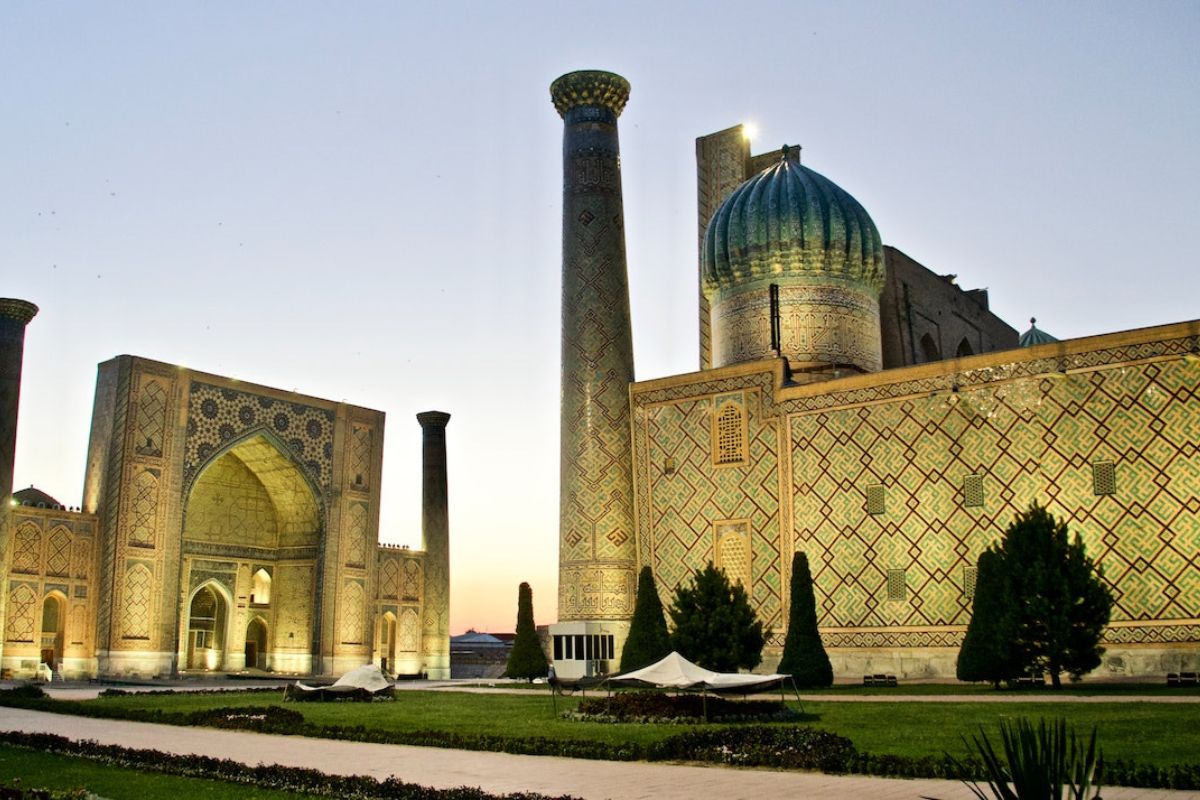
Photo: Abdullah Aydin
The Largest Tourist Complex in Central Asia
One of the most significant constraints to Samarkand’s emergence as a tourist attraction was a lack of adequate infrastructure. As a result, Silk Road Samarkand’s developers took advantage of the chance to revive a 260-hectare land centered on the historic rowing canal, around 20 minutes’ drive from the UNESCO monuments. As a result, a new tourism zone capable of meeting the needs of visitors has been established.
A public complex contains a variety of hotel types, including world-class hotels, specialized boutique hotels, contemporary public spaces, parks, recreation, and sports areas, authentic restaurants, cafes, and bars, as well as an international congress hall and cultural sites.
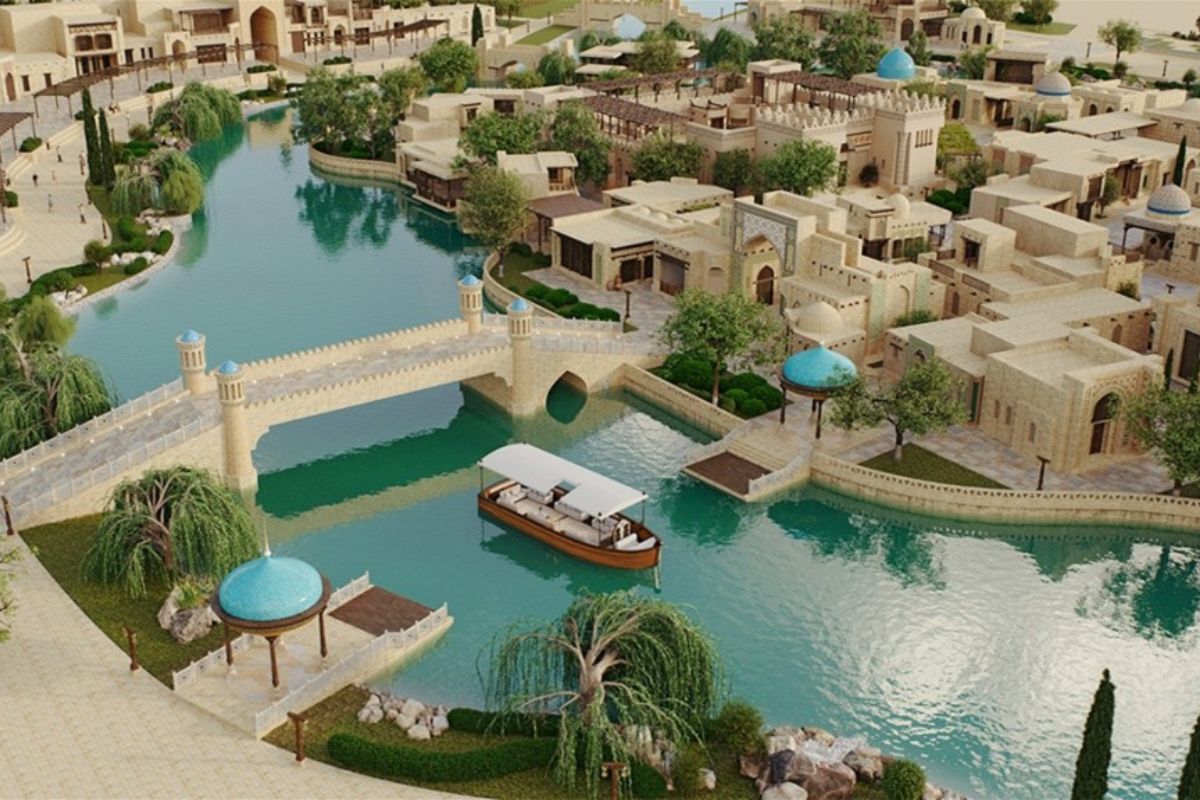
Photo: ECO Cultural Institute
The cutting-edge proposal is an outstanding mixture that allows for the merging of diverse theme zones into a balanced architectural ensemble unparalleled in Central Asia.
It is split into two primary sections. A congress hall and four upscale hotels with manicured grounds are located in a Business Cluster to the north of the rowing canal. The Southern Cluster is made up of four boutique hotels, each with its own medical and sanatorium area, as well as an eco-village, the Eternal City historical and ethnographic complex, and numerous commercial areas.
Wanderlust Tips USA – TIPS
Samarkand Monthly Specials – Autumn (September – October) and Spring (April – May) are the best times to visit the city when the weather is mild. – Winter (December – February) is also well worth going to Samarkand if you can stand the cold. You will be able to admire the beautiful architecture when it is covered with white snow. Transportation From USA to Uzbekistan: From Tashkent to Samarkand: This website does not always work, so it is best to buy tickets at the pier before departure. Necessary Items – Hats, sunglasses, sunscreen, and sports shoes (for summer) |

